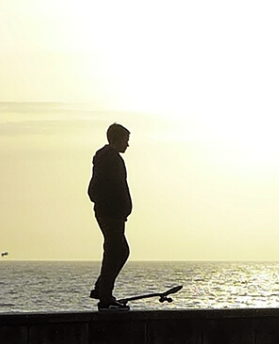Crosby, John, of Lowmoor in Dean (alive before 1624)
IN PROGRESS
Lowmoor
Lowmoor is the place marked 'Moorhouse' on this map. Much has changed over the centuries - particularly the course of the River Marron. This, which marked the boundary between the parishes of Dean and Lamplugh, was straightened in the nineteenth century. Clearly on the map it has been syphoned off to create a reservoir for the corn mill (I would guess this arrangement goes back to the sixteenth century at least).
Its owners shared grazing and other rights on the neighbouring common wasteland with the residents of Ullock, Branthwaite Edge and others.
Lingcroft was owned by a top-level yeoman family, by name Bowman, who also had a branch in Ullock. This family (with a connection to a former Archbishop of Canterbury) had influence over the local probate court.
Whitekeld was then split into three tenements. In the nineteenth century, these were converted into one and Lowmoor was incorporated into the Whitekeld estate.
Lowmoor and Crosby
The Crosby surname is associated directly with Lowmoor in 1613 (the burial of 'Jannet Crosbe of the Law Moor' on 08-10-1613) and 1669 (when the family surrendered the property). Clearly they lived there between those dates, and possibly back to 1547 or earlier (as a Matthew Crosby was buried in Dean in that year).
Crosby, Dickinson and Pearson
A complex web of relationships centre upon Lowmoor. These are examined at:
John Crosby's family
John Crosby of Lowmoor was presumably son or grandson of the Janet above. He married 17-09-1615 in Dean to Janet [?] of Outrigg. They had three daughters before the surviving register ends: Ellen (baptised November 1615 as at Outrigg), Elizabeth (baptised 16-02-1617/8 as at Lowmoor), and Mabel (baptised and buried 1620).
A William Crosby, who would have been their son, is listed in the Dean Protestation in 1642, so would have been born between 1620 and 1624. His placing in the list is directly above three residents of Whitekeld, the hamlet next to Lowmoor to the south.
A Robert Crosby appears further down the list [85], bunched with families associated with Ullock and Branthwaite Edge. Presumably a brother of William, again born in that 1620-1624 window.
The sale of Lowmoor to Peter Robinson
Thomas Crosby surrendered Lowmoor to Peter Robinson, a wealthy Quaker, in 1669.
Thomas was most likely son of William Crosby, and grandson of John Crosby, both deceased by then. In 1669, at about 21, he might have just have come into his inheritance.
Why did he sell? Well, maybe he just got an offer too good to refuse. Many Friends were selling up and moving to Ireland or across the Atlantic; but, in this case, it is interesting that a Quaker Thomas Crosby suddenly starts a family down south in Lancashire (his eldest son John) in 1670.
Archive centre: Whitehaven
Reference: DDI/1/102
Title: Surrender by Thomas Crosby and admission of Peter Robinson to Lowmoor (messuage and tenement at Ullock, in the Manor of Dean), rent 2s.4d., fine 23s. 4d
Date: 28 June 1669

